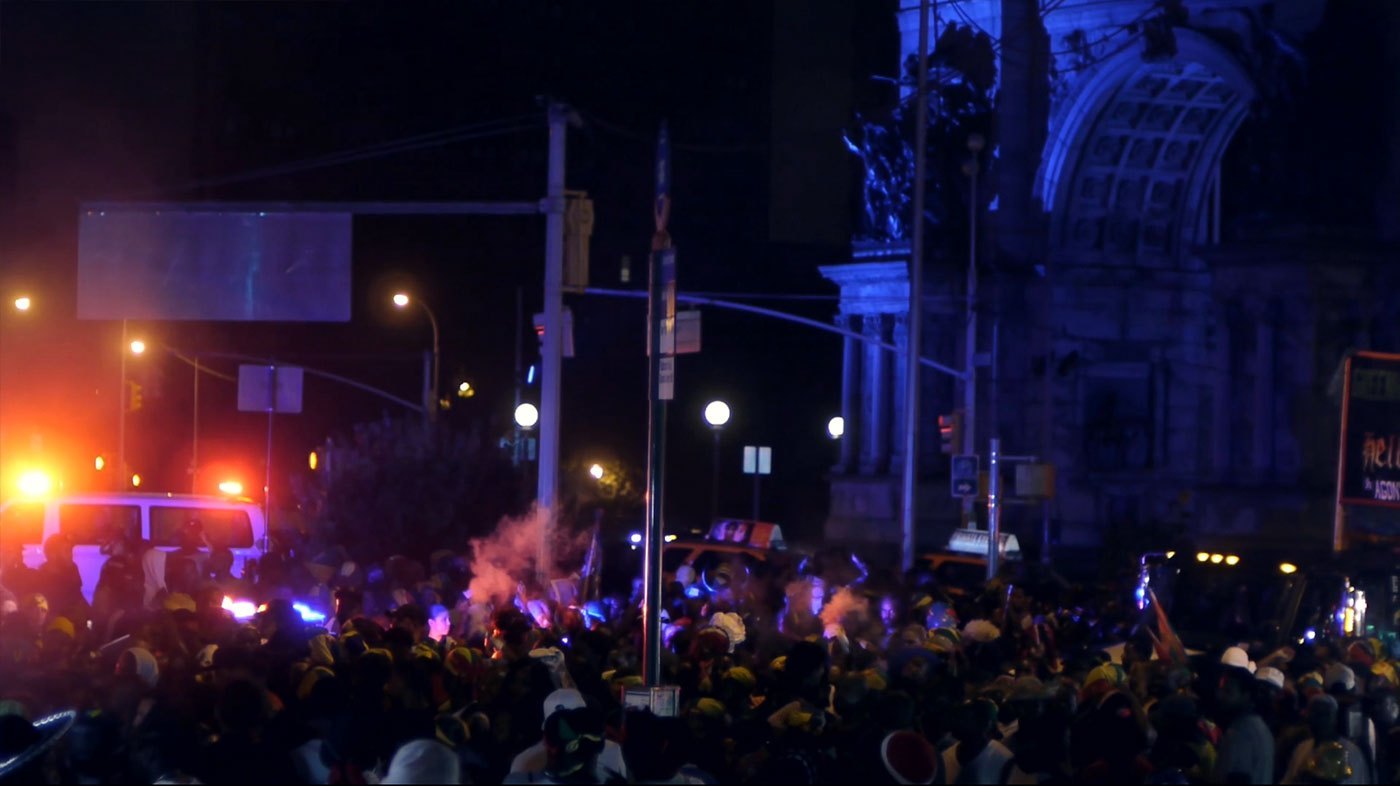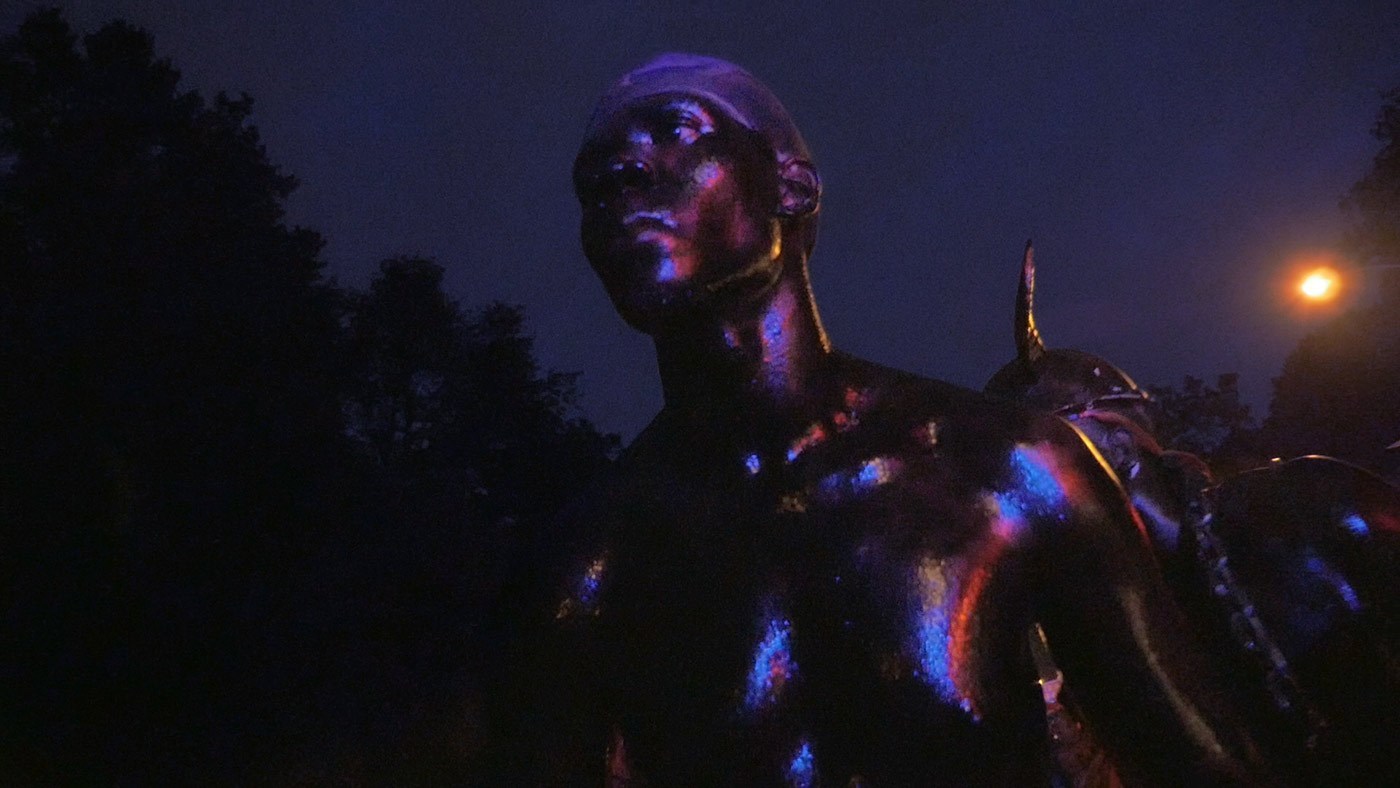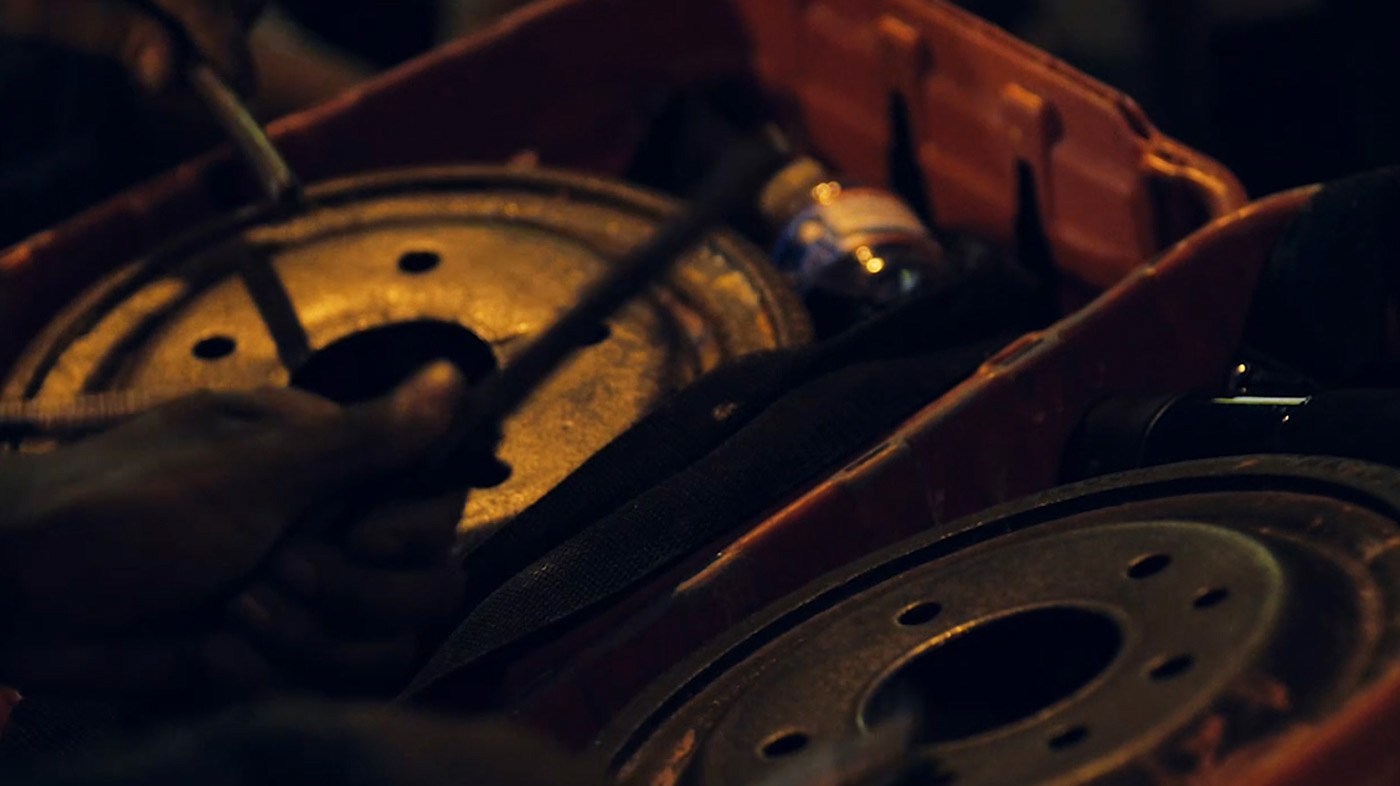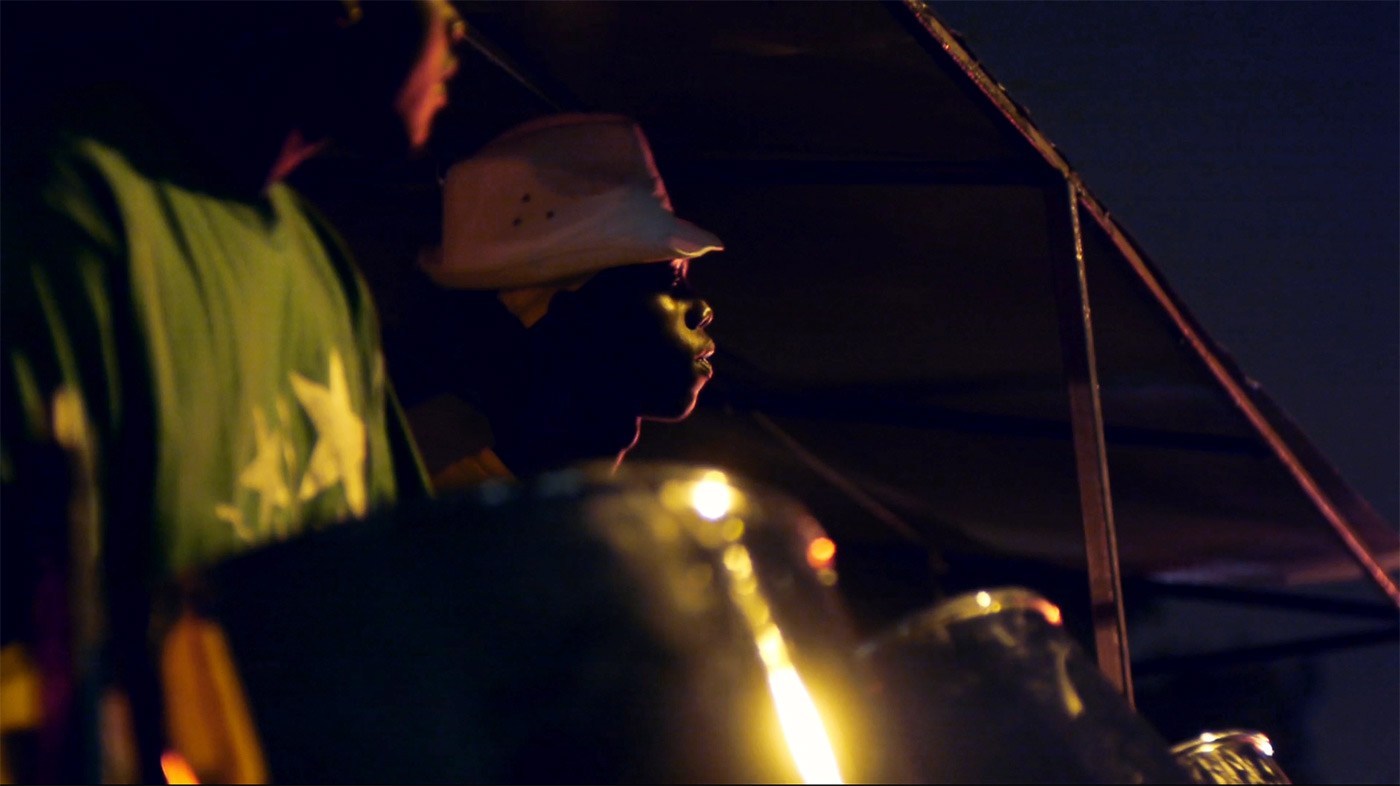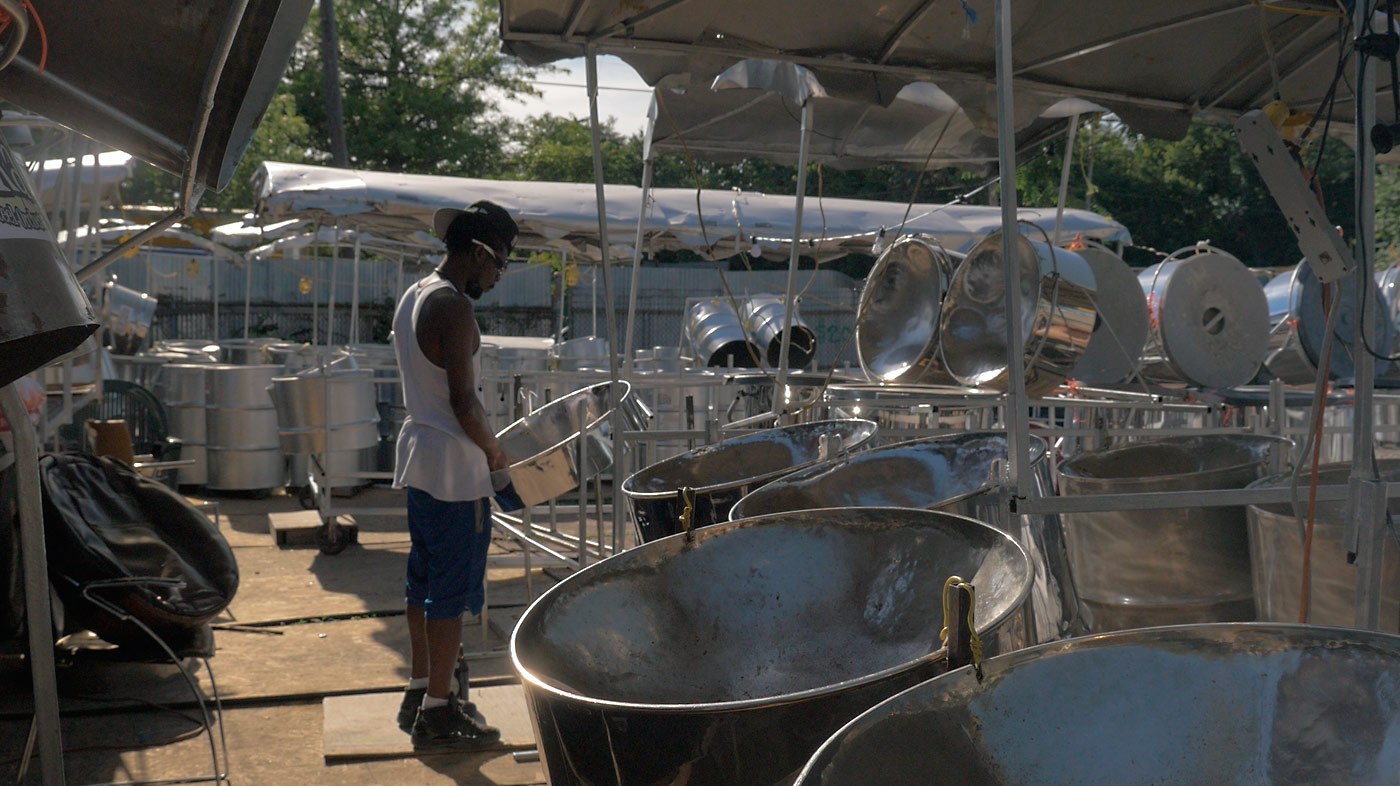New York’s J’ouvert overwhelms the senses during the pre-sunrise hours as it marks the start of Carnival festivities. Steel bands are ushered down Brooklyn’s streets by dancing crowds of revelers in an outpouring of percussion music and masquerading. Rooted in the celebration of freedom from slavery, J’ouvert has become an expression of rebirth and joy throughout the Caribbean and abroad. This film explores the rich history of J’ouvert and captures it’s undeniably powerful energy as it lights up the streets of Flatbush in a brilliant explosion of sound, color and excitement.
The largely unknown history of J’ouvert
J’ouvert’s origins are traced back to the 18th century when Carnival, a masquerade ball marking Catholics’ symbolic “farewell to flesh” before Lent’s start, was introduced to Trinidad and other Caribbean islands by French colonists and settlers. Banned from participating, slaves of African descent began to hold their own celebrations. They would mimic the Carnival of the plantation owners while incorporating African musical and masquerading elements. Their celebration became a way to express creativity while also maintaining a variety of African traditions.
With Trinidad’s emancipation in 1834 these celebrations evolved into J’ouvert, which is literally translated as, “the dawning of a new day.” Rooted in this celebration of freedom from slavery, J’ouvert has become an expression of rebirth and joy throughout the Caribbean and abroad.
Beginning in the 1930s, widespread immigration from the Caribbean brought Carnival traditions to New York. While the more popular daytime festivities are now dominated by bright, feathery costumes and amplified electronic music, Brooklyn’s J’ouvert continues to embody Carnival’s old time traditions with a mixture of macabre characters and a strict adherence to live percussion and steel pan music.
Today’s J’ouvert consistently attracts over half a million revelers to Brooklyn’s Flatbush neighborhood. Unfortunately, the majority of media coverage focuses on the handful of violent, tragic, incidents that interrupt the otherwise peaceful celebrations. Sadly, the politically and racially charged response to violence surrounding J’ouvert has led to greater and greater restrictions that may permanently alter or even end an otherwise significant New York tradition. Hopefully this film can contribute to a more nuanced understanding of J’ouvert’s cultural and historical significance and the important role it plays in New York’s rich cultural legacy.

